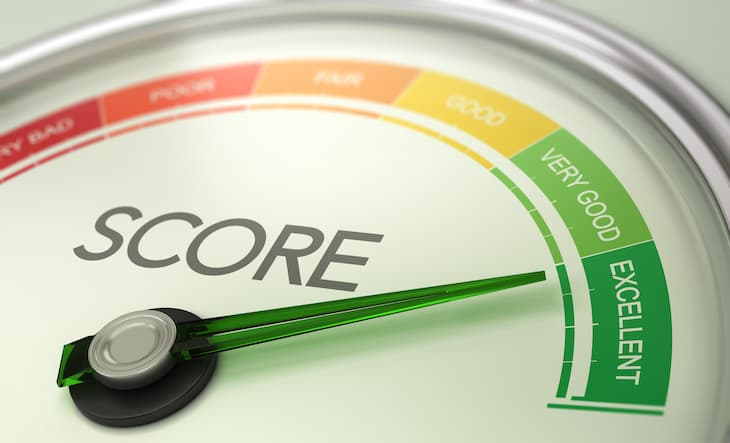Disclosure: Articles may contain affiliate links. As an Amazon Associate, we earn from qualifying purchases (at no additional cost to you). See our full disclosure here.
Last updated on September 12th, 2023 at 02:35 pm
In the world of personal finance, few topics are as daunting as debt. From intricate terms to complex phrases, it’s no surprise so many individuals are left feeling overwhelmed when opening up about their money worries.
However, gaining a clear understanding of these terms is essential for making informed financial decisions and managing debt responsibly, whether you’re dealing with car loans, student loans, mortgages, or credit cards.
This guide aims to demystify common debt terms, equipping you with the knowledge you need to navigate the world of borrowing with confidence.

Debt
Before building a bank of debt-related terms, it’s important to know the basics.
Firstly, debt is money you owe to another party, usually a lender, which must be repaid under certain terms. This can be in the form of loans, credit cards, mortgages, or any other financial obligation that requires repayment.
The borrowed amount, which is commonly referred to as the principal, often accumulates interest and charges over time, adding to the total amount owed. For more information on debt and how to deal with it effectively, find out more here.
Debtor
A debtor is an individual or business that owes money to another individual or business (the creditor). They are referred to as a borrower if the money is owed to a bank or financial institution or an issuer if the debt is in the form of securities.
Debtors may have various debts, such as personal loans, credit cards, and mortgages, and represent the side of the lending arrangement that receives funds and is required to repay it over a specified period, often with added interest.
Creditor
A creditor is an individual or business that lends money to another individual or business (the debtor). They extend funds to debtors with the expectation of being repaid, often with added interest, over a specified period and under agreed terms.
Creditors can be banks, financial institutions, credit card companies, or individuals that provide loans or other credit products, and have the right to take action to recover the money owed in the event the debtor fails to meet their obligations.
Interest Rate
Next up on our list of basic debt terms is interest rate. An interest rate is the cost of borrowing money, typically expressed as a percentage of the total loan amount. In simple terms, it is the fee you pay to the lender for the privilege of being able to use their funds.
Usually, a higher interest rate means you’ll end up paying more over the life of the loan. For example, if a loan has an annual interest rate of 10%, this means that 10% of the borrowed amount will be added to the total amount you’ll be expected to repay after one year.
This amount might differ if you borrow the money for less or more than a year.
Default
Default occurs when you fail to make the agreed-upon payments on a debt as initially laid out in the loan contract and have therefore broken the terms of the agreement.
Defaulting on a loan can lead to penalties, damaged credit, and potential legal action by the lender to recover the amount they are owed. This will have a negative impact on your creditworthiness and may lead to you owing more in the long term.
Collateral
Collateral is an asset you can offer as security to the lender in the event you default on a loan. For example, if you can no longer afford to make payments towards your mortgage, your house will serve as collateral and may be repossessed if you can’t find a way to make up for missed payments.
This is a guaranteed way for the lender to recoup the amount they are due and recover their losses in the event you can no longer afford your monthly payments.
Secured vs. Unsecured Debt
The key difference between secured and unsecured debt is collateral. For example, secured debts require collateral, while unsecured debts don’t.
Mortgages and car loans are examples of secured debts, whereas credit card debt and student loans are considered unsecured debts.
Knowing the difference between secured and unsecured debt is key to researching and managing debt effectively. Defaulting on a secured loan can lead to your car or home being repossessed.
Debt Consolidation
Debt consolidation is the process of combining multiple debts into a single loan or payment. This can simplify your finances, potentially leading to lower monthly payments and a reduced interest rate, making it easier and more affordable to manage your debts.
There are advantages and disadvantages to consolidating your debts, all of which must be thoroughly reviewed before making a decision. Debt consolidation is often recommended for individuals juggling multiple high-interest debts.
Prepayment Penalty
Certain loans carry prepayment penalties, which are fees imposed on borrowers who pay off their loans before the agreed-upon term. Being aware of such penalties before making extra payments will ensure your debt repayment efforts are financially beneficial.
The main aim of prepayment penalties is to encourage borrowers to repay the principal over a longer term so lenders can collect more interest.

Fixed-Rate Loan
A fixed-rate loan is a loan with an interest rate that remains the same for the duration of the loan term. For example, with a 30-year fixed-rate mortgage, your monthly payments will remain unchanged for 30 years, regardless of market rate fluctuations.
This type of loan provides maximum stability as it allows borrowers to accurately predict their monthly payments and lock in lower interest rates when the economy is in turmoil, but can be more expensive.
Variable-Rate Loan
A variable-rate loan, also known as an adjustable-rate loan, is a loan with an interest rate that can change periodically based on market rate fluctuations. For example, if the market interest rate rose, your monthly payments would also increase to reflect this change.
This means that, while your monthly payments may be lower to start with, they are subject to change and can increase at any time.
Repossession
Repossession is the legal process through which a lender reclaims collateral, such as a car or other property, when a borrower defaults on a secured loan. The lender can take possession of the collateral and sell it to recover the outstanding debt.
There is a strict process creditors must follow when repossessing collateral, and it is usually only considered as a last resort.

Credit Score
Your credit score is a debt term you should definitely be famililar with. It’s a three-digit number used to represent how reliable you are when borrowing money. It is based on various factors, such as your total debt level, number of accounts, and repayment history.
Lenders use credit scores when deciding whether to approve credit applications. Typically, a higher score will lead to more favorable terms and better interest rates.
By grasping these fundamental debt terms, you’ll be better equipped to make wise financial choices and steer clear of potential pitfalls.
Remember, borrowing can be a useful tool when managed wisely, but understanding the various terms associated with debt is crucial for maintaining good financial health.
Also read:
How to Pay Off a Car Loan Faster + The Pros and Cons
Get Your Truly FREE Credit Report and Credit Score Online
Build Your Savings with 12 Easy Frugal Living Tips
You can find MomsWhoSave on Facebook, Instagram, Pinterest, and Twitter. Follow us to get our latest updates.
Don’t miss a thing! Subscribe to MomsWhoSave’s newsletter.
Leave a Reply